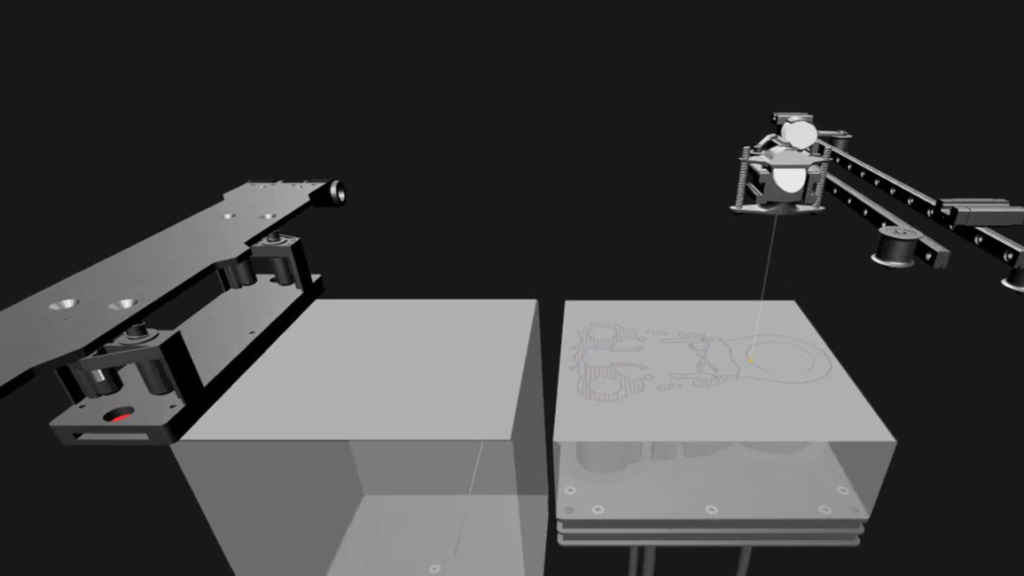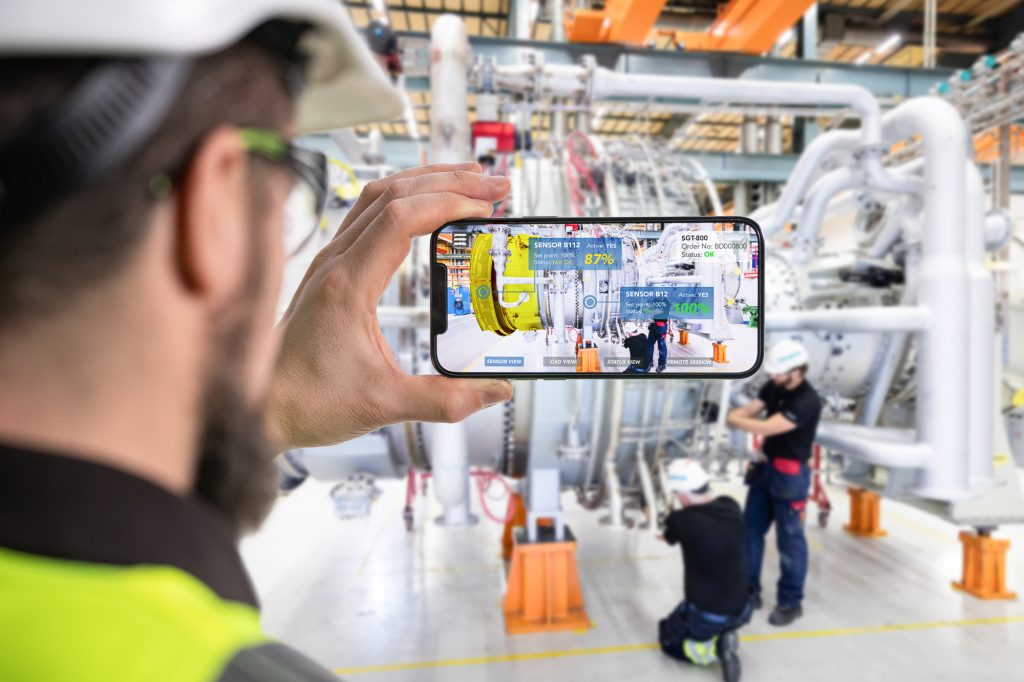Jayant Mathur, a PhD student at The Pennsylvania State (Penn State) University, is leading a research project exploring the use of immersive virtual reality (VR) software in additive manufacturing.
3D Printing Industry recently sat down with Mathur to learn more about this project, and the potential for VR within additive manufacturing.
Conducted through the university’s Made By Design Lab, this research seeks to assess the utility of VR as a training and design tool for 3D printing.
“We’re increasingly seeing an emergence of immersive VR headsets, and it’s becoming quite common to see their role in engineering and design processes, or even manufacturing,” explained Mathur.
“How do we train people to gain technical competency, and how do we help them get design intuition? How do we bridge these two seemingly different technologies to address a common goal that we know is the limitation in the current industry?” According to Mathur, this is the overarching challenge that this project is hoping to address.
“It’s a matter of trying to figure out where in the additive manufacturing workflow VR fits best,” added Mathur. “Because we know it has a place, we just need to figure out where that is.”
The project is being directed by Nicholas Meisel, Associate Professor at Penn State University. It includes cooperation from Professor of Engineering and Design in Manufacturing Timothy Simpson, and Professor Scarlett Miller, Administrative Fellow to the Executive Vice President.
Launched back in 2020, this project is set to run until May 2024.

VR as an additive manufacturing training tool
One key finding from this research is that VR is a more effective training tool for additive manufacturing than traditional computer-based methods. “When it comes to training people, virtual reality is far more intuitive as a modality than computer-aided technology,” explained Mathur.
Mathur pointed to powder bed fusion (PBF) and directed energy deposition (DED) technology as being well suited to the VR space. Marthur argues that, given the costs and risks associated with PBF, it is not a good idea to introduce somebody with no hands-on experience to this technology. However, training somebody in the virtual space, argued Mathur, can provide the necessary knowledge and experience to safely handle PBF 3D printers.

“There is a big difference between learning with a non-immersive computer screen, versus learning with a virtual reality headset and controllers. What we have found is that VR can be comparable to real, in-person conditions,” explained Mathur.
In fact, according to Mathur’s research, individuals who use VR with industrial 3D printing systems can gain as much knowledge as they would if they were right in front of the 3D printer in real life.
“That’s one of our key findings. This tells us that virtual reality has a place in our design and manufacturing workforce at this stage,” stated Mathur. “This opens up many avenues for how we think about training processes, education, learning, and also how to prepare the workforce to take advantage of additive manufacturing.”
A user loads new powder into the feed bin of the Xact Metal XM200C powder bed fusion 3D printer. The video then jumps to visualizing the 3D printing of a part inside the system. Video via Jayant Mathur.
Expanding design complexity in additive manufacturing
According to Mathur, VR is not limited to training applications in additive manufacturing. An additional area being evaluated by the Penn State team is that of design for additive manufacturing (DfAM).
“We all know the different geometric complexities that additive manufacturing can offer in our design processes. We are trying to figure out if there is a way for us to visualize and evaluate these designs that might benefit from spatial immersion,” explained Mathur.
In fact, as with training applications, Mathur claims that designers find it just as easy to use VR for CAD designing as with traditional computer screens. “That’s really interesting because you would think that it would be difficult or tedious to do design work with this technology, but it isn’t.”

Mathur sees these findings as highlighting the potential for VR to increase additive manufacturing design complexity in the future. “As design complexity increases, there might be a place for virtual reality where computer screens are just not enough because they are constrained and they limit the viewpoint,” explained Mathur.
What’s more, Mathur believes that VR will extend the use of additive manufacturing by increasing the confidence and openness of designers to adopt 3D printing. In turn, it is hoped that this will alter the ways that designers approach DfAM, enabling new design complexities in the process.
“I feel that, because of the capabilities that virtual reality offers, it can change how we think about design and how we think about solving problems,” stated Mathur. “The spatial immersion and realism that VR can offer may influence how designers approach design problems, compared to when it’s on a computer screen.”
“I believe VR will make designers consider that there are certain levels of complexity that a product may benefit from and that additive manufacturing might be the way to go about it.”
Digital twins, quality assurance, and maintenance
The use of digital twins in additive manufacturing is nothing new, with companies already combining digital twins with VR to optimize the process simulation of 3D printed parts.
For instance, during Formnext 2023 Isabelle Hachette, CEO of Swedish software company Interspectral, explained how the company’s AM Explorer software enables the creation of multi-channel digital twins. Here, users can interact with 3D printed designs and parts in a VR or AR environment.
According to Mathur, the value of VR here depends on what the designer or engineer is hoping to gain from the digital twin. On the one hand, if the digital twin is only required to provide numerical data, then the value of VR is limited.
However, in an application where the user wants to visualize the digital twin, Mathur sees immense value in using VR. “If the user wants to visualize and change things intuitively, and if they want an interaction synonymous with human experiences, then I see a big potential in having 3D immersion,” stated Mathur. “If you need to be able to manipulate the part or enter an environment in a way that’s not intuitive or possible on a computer screen, then VR definitely adds value.”
Mathur believes that virtual twins and VR could play a growing role in 3D printer maintenance and customer support in the future. In the current context of ongoing supply chain challenges, spending cuts, and efforts to minimize CO2 output, the ability to diagnose and resolve hardware challenges through VR could certainly offer significant value.
“This doesn’t just have to be VR, but could also be mixed reality,” argued Mathur. “Instead of paying $600 for a flight ticket for somebody to go to the 3D printers, why not bring them there digitally? We have the potential for that to happen, and I think that’s something people will invest in.”

The future of VR in additive manufacturing
One advancement Mathur expects within the field of VR and additive manufacturing relates to the integration of artificial intelligence (AI). “My vision for AI is that, if I have a question, I can have the AI generate an answer telling me what I should be looking for.”
Mathur also pointed to generative AI tools that can create 3D printing geometries based on prompts. Whilst these are not tethered to VR, Mathur believes that integrating these tools into an immersive environment may further enhance the 3D design process.
Ultimately, Mathur outlined that his dream is to see VR technology change the way that users design generative structures and parts with additive manufacturing in mind. “We’re often so focused on what we can see on a computer screen, that we limit the spatial nature of design,” stated Mathur. “What I’m most excited to see is the development of tools that help to advance the way we think about design.”
What’s more, Mathur believes that mixed reality will have a big role to play in the future of additive manufacturing, allowing users to switch between levels of immersion and seamlessly switch between a computer screen and VR or AR.
“I think mixed reality has big potential because it feels more intuitive,” explained Mathur. “Having a platform where I can instantly navigate between spaces that are miles away from me and right next to me is a really exciting possibility.”
Subscribe to the 3D Printing Industry newsletter to keep up to date with the latest 3D printing news. You can also follow us on Twitter, like our Facebook page, and subscribe to the 3D Printing Industry Youtube channel to access more exclusive content.
Are you interested in working in the additive manufacturing industry? Visit 3D Printing Jobs to view a selection of available roles and kickstart your career.
Featured image shows Jayant Mathur. Photo via Jayant Mathur.


